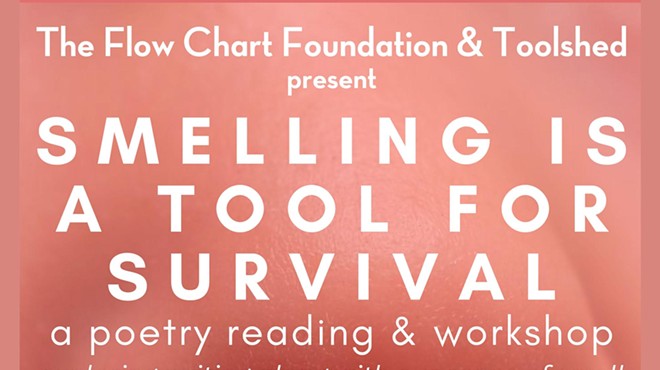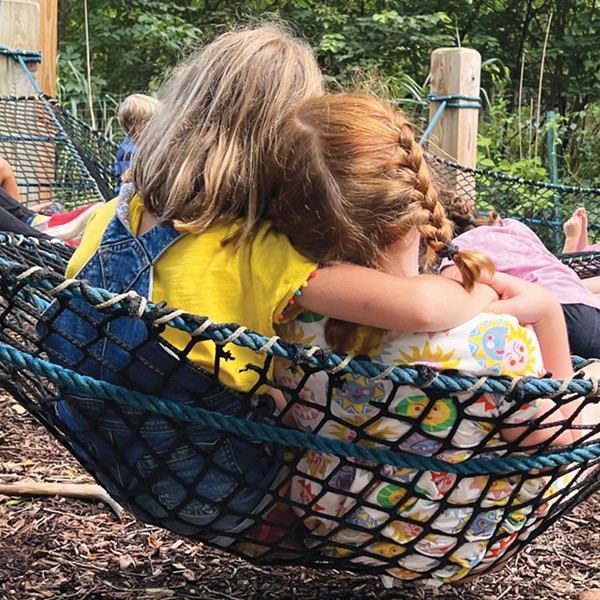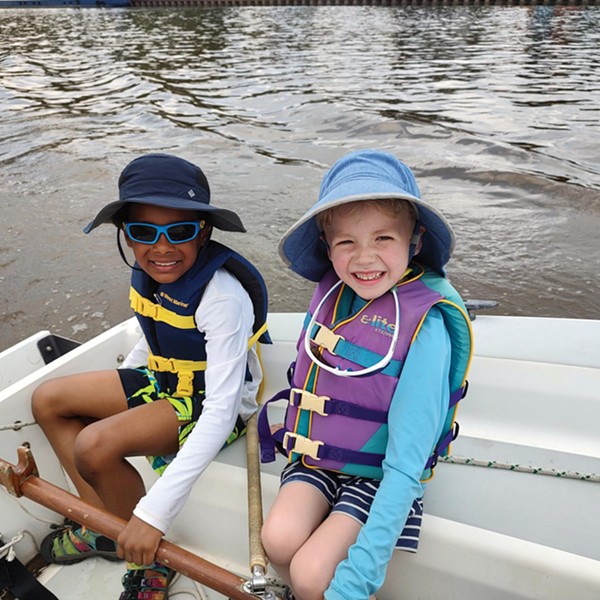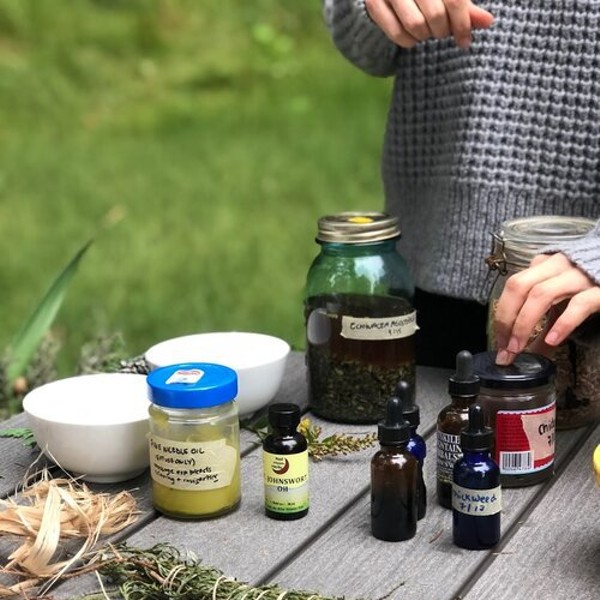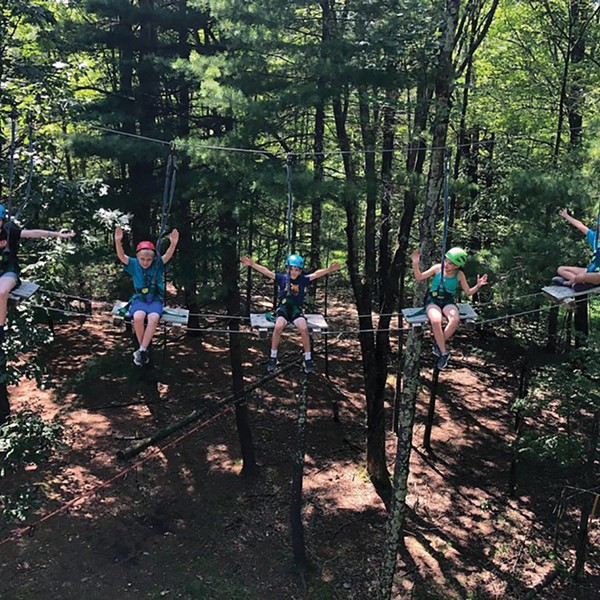With the final leg of the school year underway, many parents are beginning to think about summer, namely, what to do with the kids? Summer camp can be a great opportunity for children to spend time outside during the beautiful warmer months while developing new skills and interests. But with so many options out there from soccer camp to science camp, it can be hard to know which to choose.
Nature-based education has grown in popularity over the past decade, as educators and parents recognize the importance of children's connection to nature in an increasingly digital world. The lush terrain of the Hudson Valley offers a beautiful and multifaceted backdrop for this kind of outdoor programming. With over 15 years of experience, Wild Earth is the leading organizer of wilderness immersion camps with programs for all ages, including adults.
“Nature is an incredible teacher,” says Simon Abramson, Associate Director of Wild Earth. “We evolved spending all of our time outside. Something within the human spirit is rekindled when we are in nature.”
Growing in Nature
We asked Abramson to share some of the reasons for choosing a nature-based summer camp for your kids. Here’s what he had to say:
1. Level playing field.
The woods are often a new environment for young people, and campers are often meeting new people. In this fresh context, the normal rule book doesn’t apply, creating an opportunity to rewrite social hierarchies. “Social dynamics that are established in the classroom fall away in the woods,” Abramson says. “Quieter kids have more space to be heard. Louder kids quiet down a bit. Kids’ anxiety decreases; they experience joy and courage, and the confidence that comes with that courage.”
2. Healthy risk-taking.
A mix of group activities and unstructured time allows kids plenty of opportunities for healthy risk taking. “Nature is not a perfectly safe gymnasium,” Abramson says. “While they’re playing in the woods, the kids are having to navigate risk and hazards like poison ivy, holes in the ground where they could twist their ankle.” Instructors and older campers model how to do certain skills and activities, like starting a fire, then the children follow suite. “They are set up for success, but they are the ones testing themselves, challenging themselves, and building confidence.”
3. Expanded awareness.
Wilderness camps cultivate an expanded awareness—of one’s own senses, of the surroundings, of the plants and animals, and of others, and of on. Fire is a key teacher throughout nature camps, because it requires ongoing refinement, modulation, and upkeep. Kids learn to gather their own wood, light and tend a fire. “Through this we learn how to take care of something other than ourselves,” Abramson says. “Kids start to get firewood before they’re asked because they know they are going to want it later. There are a lot of opportunities to to anticipate the group’s needs, to serve and be proactive.”
4. Connection to self and others.
Time spent in the woods includes song, storytelling, games, and crafts. “In today’s culture with kids spending more time on screens, that face-to-face embodied connection, with no distractions, is rare,” Abramson says. “Out in the woods, it’s just good old people. That is great medicine. It extends our attention spans and builds good social muscle.”5. Physical Conditioning.
From balancing on fallen logs to running over uneven terrain, playing tag to sneaking quietly through the trees, Wild Earth camps encourage kids to play freely in the woods in a way that naturally develops agility, balance, coordination, and strength. “It’s an incredible physical work out, in a really invisible way. It’s not like going to the gym,” Abramson says. “I’ve seen young kids running full speed through the gnarliest woods. There are branches and rocks and tons of spots to twist their ankles, but they’ve been living in it for two weeks, they know every square inch of that forest and can run with confidence.”
6. Expanding sensory awareness.
“Kids are in an environment that is literally three-dimensional,” Abramson says. “They are using peripheral vision and distance vision—that is great for eyesight.” One of the activities is called “sit spot,” where campers spread out and sit quietly on their own in nature, just listening and observing. “Just by walking through the woods, your whole being is engaged—all of your senses,” Abramson says. “Then we start laying on top of that awareness of other animals and people. We understand that if we can walk through forest softly and quietly, that might afford us the opportunity to see great blue heron by the creek, or to watch a fox, or notice how the squirrels respond to us.”
7. Cultivating curiosity.
Instructors are trained to notice what kids are interested in and to ask questions to nurture that curiosity. They begin with easy questions that the kids feel confident answering then build to harder questions. One such line of inquiry might be: What animal is big enough to have left that track? What direction do you think it was going? What do you think it was looking at when stepped here? What going towards? Was it male or female? The intention of the exercise is not necessarily to answer correctly, but rather to stoke the fires of intrigue. “We go down a line of questions to find our growth edge,” Abramson explains. “Where is edge of what I know, and how can curiosity help me to continue to learn more?
8. Sense of place.
Whether they grow up in inner cities or in tidy houses with hedges and fenced backyards, many children do not identify with their broader natural context. Many kids begin wilderness camp uncomfortable with getting dirty or scared of the grass or woods, but through exposure and education they learn about their surroundings and understand a meaningful way of interacting with nature. “You go for a walk with these kids and by the end, they are picking things and eating while walking, saying ‘Oh did you know you can make tea with this?’ or ‘This leaf is great for poison ivy,” Abramson says. “They are really building intimacy with the plants and animals around where we live.”
Don’t Let Money Stop You
While some summer camps break the bank, Wild Earth is committed to making their programming financially accessible to all. They ask that people pay what they can, and they offer financial aid for anyone who cannot meet the full amount. “We have never turned a child away for lack of funds,” Abramson says. Visit their website to find out more about financial aid.









